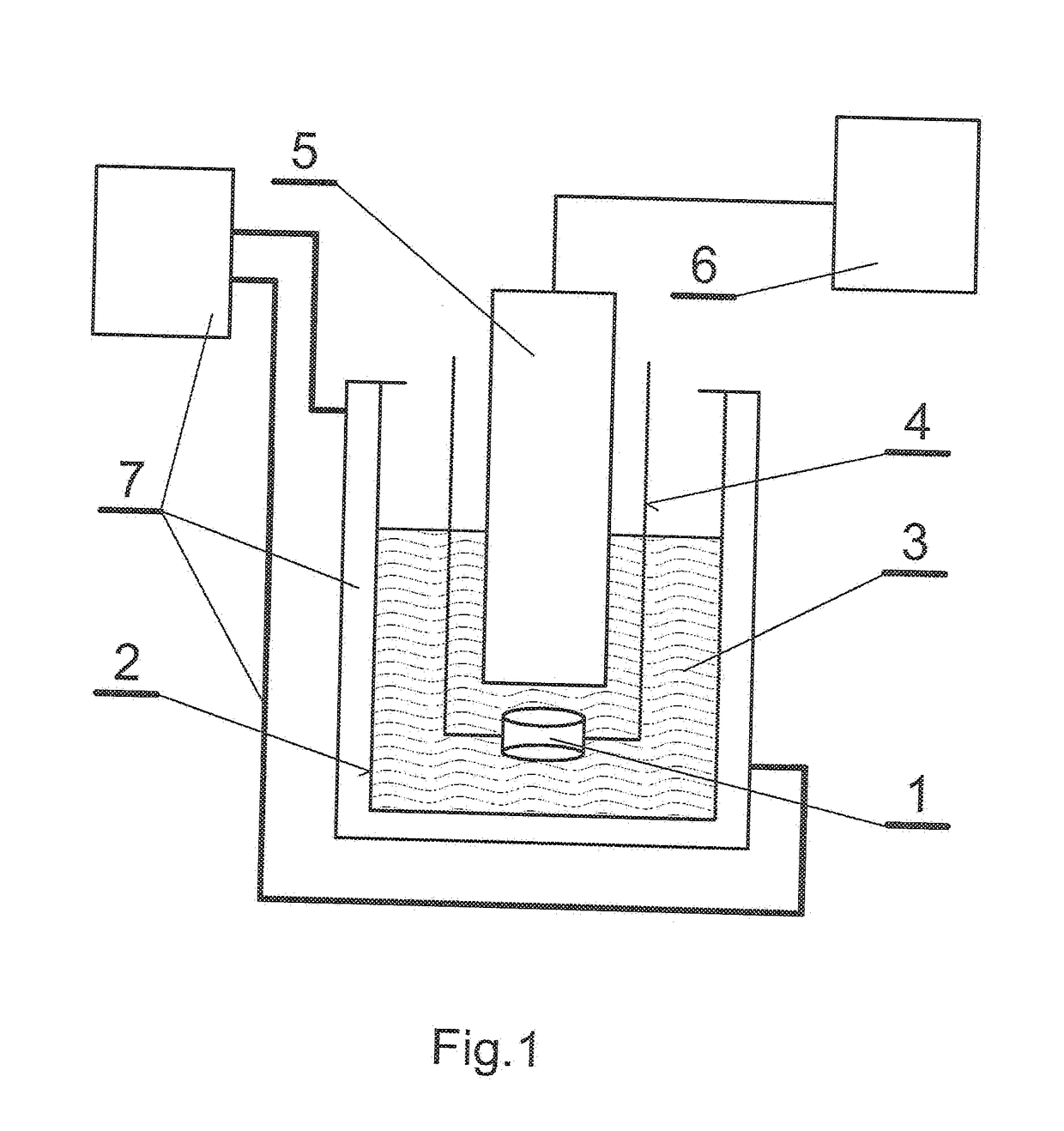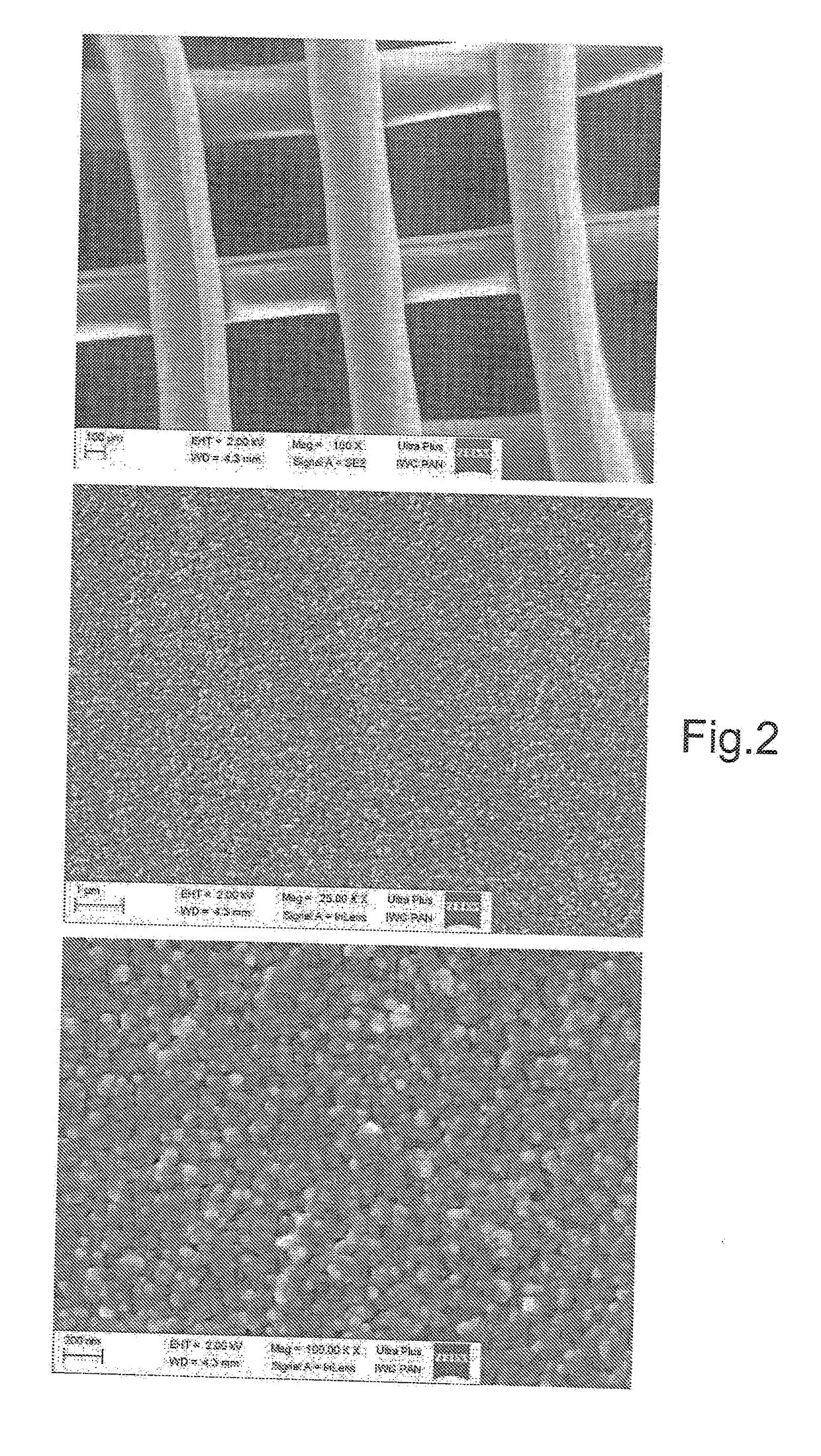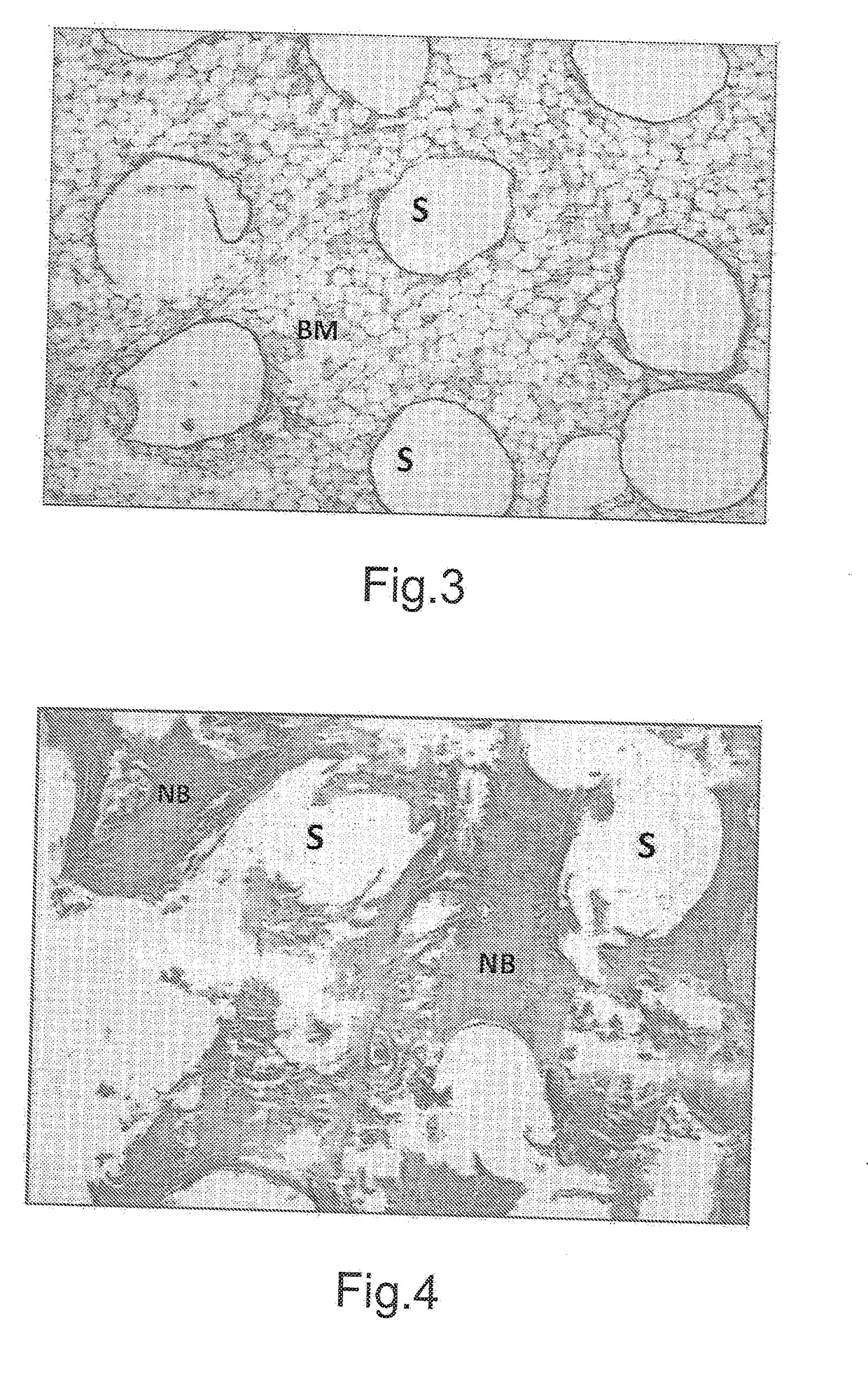Method for manufacturing bone implants and bone implant
a bone implant and bone implant technology, applied in the field of bone implants and bone implants, can solve the problems of large tissue loss (so-called critical loss), complex multi-stage manufacturing process, and large thickness of layers obtained, and achieves the effects of facilitating the adjustment of the implant shape, good quality, and effective stimulation of cell proliferation and bone tissue growth
- Summary
- Abstract
- Description
- Claims
- Application Information
AI Technical Summary
Benefits of technology
Problems solved by technology
Method used
Image
Examples
example 1
[0052]Supporting structure 1 of the implant was made of biodegradable polymer-poly-caprolactone (PCL). It has a form of 3-dimensional scaffold, measuring 4×6 mm, made from polymer fibers by printing technology of the spatial “rapid prototyping” which is described in W. Święszkowski et al., “Repair and regeneration of ostechondral defects in the articular joints” [Biomolecular Engineering, 2007 24 (5): pp. 489-95] The supporting structure 1 is characterized by the porosity of approx. 41%. As the coating material of the supporting structure a nano-powder of hydroxyapatite GoHAP was used, with a molar ratio (Ca / P) of 1.65, containing 5% by weight of structural water. This powder (in amount of 0.1% by weight) was mixed in 50 ml vessel 2 with deionized water to form a homogeneous suspension 3, wherein the external phase is water and the internal phase is hydroxyapatite. The supporting structure 1 was rinsed with distilled water, and then fitted to the stand 4 for im...
example 2
[0055]In order to produce a ceramic implant coated with a layer of nano-particles of hydroxyapatite a supporting structure in a form of porous ceramic pellets was used. For the production of pellets a method of uniaxial pressing of the β-TCP powder was used with a pressure force of 15 kN. For the production of one sample 3.06 g of powder was taken. In order to achieve structural microporosity a heat treatment method was used in which said pallet was subjected to 1200° C. for a period of two hours. The pellets were then examined for signs of porosity using methods of computer microtomography and Archimedes method. According to the μ-CT calculations a porosity of 49% was reached, while the result of the analysis by the Archimedes method was 52% (+ / −2.6%). The coating processes with GoHAP of the prepared ceramic implant supporting structure was carried out in a manner analogous to the first example, wherein a nano-powder with a water content of 5% by weight was us...
example 3
Monolithic Metallic Implant
[0057]In order to produce a monolithic metal implant a supporting structure was used in a form of a titanium screw having a diameter of 5 mm and a length of 150 mm, dedicated to arthroscopy. The screw was coated with a layer of GoHAP nano-particles by ultrasonic effect on the aqueous suspensions described in detail in the first embodiment, wherein a powder has a diameter of not more than 6 nm, a structural water content of 3% by weight, molar ratio of calcium to phosphorus (Ca / P) of 1.60. Based on the SEM image analysis it was found that the resulting coating has morphological properties characteristic for the initial GoHAP powder. The titanium screw was coated with a uniform layer of hydroxyapatite having a thickness of 200 nm, covering 85% of its surface (FIG. 8).
PUM
| Property | Measurement | Unit |
|---|---|---|
| Temperature | aaaaa | aaaaa |
| Temperature | aaaaa | aaaaa |
| Fraction | aaaaa | aaaaa |
Abstract
Description
Claims
Application Information
 Login to View More
Login to View More - R&D
- Intellectual Property
- Life Sciences
- Materials
- Tech Scout
- Unparalleled Data Quality
- Higher Quality Content
- 60% Fewer Hallucinations
Browse by: Latest US Patents, China's latest patents, Technical Efficacy Thesaurus, Application Domain, Technology Topic, Popular Technical Reports.
© 2025 PatSnap. All rights reserved.Legal|Privacy policy|Modern Slavery Act Transparency Statement|Sitemap|About US| Contact US: help@patsnap.com



